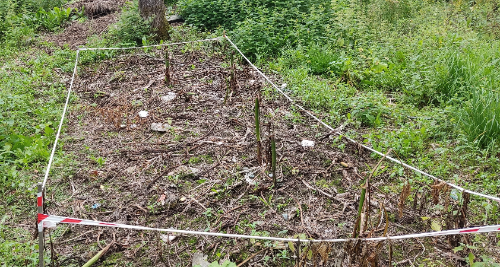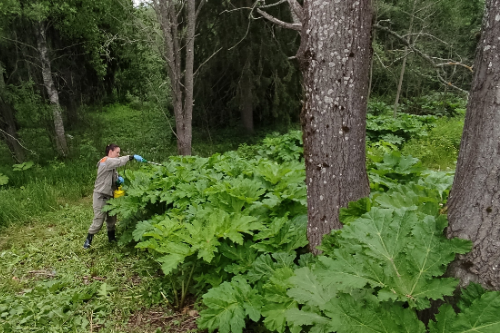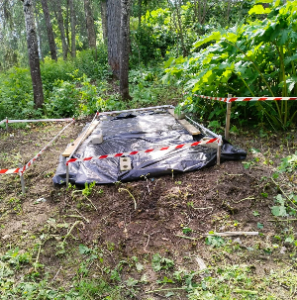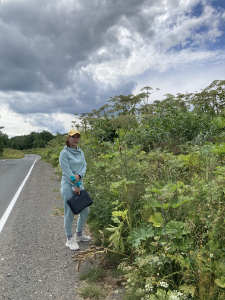– Today, the Sosnowski hogweed issue is widely discussed in the society due to the risk of people getting burns when touching the plant, allergic reactions to flower pollen, mass dispersal of hogweed in the urban environment and its invasion of abandoned farmland. But what do hogweed invasions do to soil organisms and ecosystems, as well as soil fertility in general? These questions have remained virtually unstudied, - said Anna Sushchuk, Senior Researcher at the Institute of Biology KarRC RAS, the research leader.
Nematodes are roundworms that inhabit almost all environments. Parasitologists Anna Sushchuk, Elizaveta Matveeva and Daria Kalinkina, who have been studying soil nematodes for many years, are convinced that this numerous, diverse, ubiquitous group of soil organisms and a recognized bioindication object will help to find answers to the questions posed.
Indeed, it is known that due to its aggressive strategy of seizing new territories and competitive advantages, the hogweed suppresses local plant species. On the surface, one might expect that the establishment of a monodominant plant community would also cause a reduction in the diversity of soil organisms, but nematological studies did not confirm this hypothesis. When comparing soil nematode communities from hogweed-invaded meadow ecosystems and from the reference meadow, biologists found that nematode diversity remained at the same level, but its taxonomic composition and structure changed, i.e. there are nematode species that prefer the soil of a forbs meadow, while others are more successful under hogweed.
Another preliminary result of the first year of research is an understanding of latitudinal distribution patterns for soil nematode communities under hogweed. In Karelia, plant-associated nematodes proved to be more abundant in soil under hogweed: this group includes nematodes that can feed using both roots and soil fungi, as well as omnivorous nematodes. In the hogweed-occupied sites located further south (55°-60° N), there dominated microbial-feeding bacteriotrophic nematodes and plant parasites. The results of this study were published in an international journal.
"Understanding the dispersal patterns of organisms 1 mm and smaller, their habitat preferences and relationships with plants is an important part of ecological studies and one of the priority tasks in basic research", – the authors of the study emphasized.
Another question addressed within the project is of applied nature - testing different hogweed control methods for their effectiveness and impact on soil organisms.

Test site two months after herbicide treatment
During the growing season of 2024, a field experiment was conducted in test sites at the KarRC RAS Agrobiological Station with five variants: treatment of hogweed with hot, about 90°C, water, spraying the plants with glyphosate-based Roundup herbicide, regular mowing, covering up with black polyethylene film, and no treatment as the control. As a result, the herbicide treatment was shown to be highly effective - after two treatments, the plants that had reached 1 m height but had not yet entered the generative phase died, and no new hogweed sprouts were observed until the end of the growing season.
The effects of different hogweed control methods on soil nematodes and soil fertility are yet to be elucidated. The material is being processed and the results will be reflected in scientific publications.








